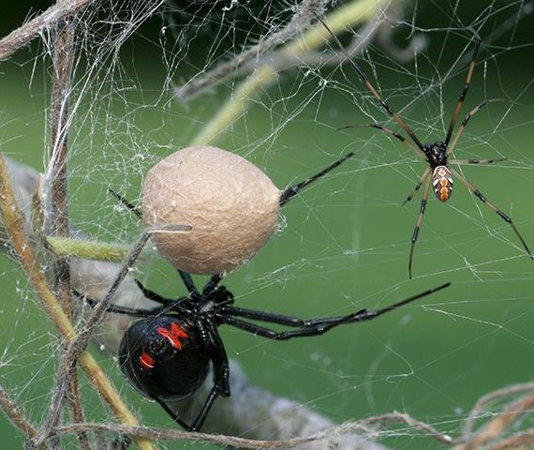How to Identify Dog & Cat Fleas
Fleas are common parasitic organisms that feed on the blood of their hosts in order to survive. While they are wingless, they are known for their ability to jump several times their own height to get onto the skin or fur of animals they come into close contact with. Across the United States, people and pets are generally affected by one of two types of common fleas: cat fleas and dog fleas.
Cat Fleas
Cat fleas make up the majority of North American flea infestations. They are small, parasitic insects that measure about 1/4 inch long. They are dark brown or black with hardened bodies that look compressed when viewed from the side. They have large, black legs they use to jump onto their prey; from there, they use their strong jaws to latch onto their prey and feed on their blood.
Fleas lay eggs that are small, white, and oval-shaped. However, these are often difficult to see with the naked eye. The eggs hatch into larvae, which are slightly larger and easier to spot than adult fleas and resemble maggots.

Are Cat Fleas Dangerous?
Cat fleas will latch onto any mammals they come into contact with, whether that be humans or their pets. Bites can cause allergic reactions, usually small red raised bumps that can cause severe irritation and itchiness.
In pets, cat fleas are known to cause Murine typhus, cat scratch disease, tapeworms, Rickettsia felis, Dipetalonema reconditum, and Acanthocheilonemal reconditum – all of which can lead to serious complications in dogs and cats. Cat fleas can transmit a number of diseases and parasites to humans, including flea-borne typhus, bartonellosis, tapeworm, and various bacterial infections.
Why Do I Have a Cat Flea Problem?
Don’t think you’re safe from fleas just because you do not have pets; cat flea infestations typically start after pets pick them up while outside before carrying them into the home, but they can be carried into residential areas through a wide range of hosts, including rats, mice, raccoons, squirrels, foxes, and other wild animals that happen to stumble into your yard. For this reason, a flea infestation could be an indication of a secondary pest infestation somewhere in your home. Additionally, the fleas’ high vertical jump can allow them to latch onto your shoes or pant legs and get inside that way.
How Do I Get Rid of Cat Fleas?
Cat fleas are incredibly difficult pests to remove from the homes they infest. They are small and can get into the smallest nooks and crannies throughout the home, and can hide inside clothing, furniture, carpets, and other fabrics. Killing the adult fleas is not enough, as if you fail to eliminate any eggs or larvae still in the home, the infestation will only reappear shortly afterward.
If you are suffering a cat flea infestation, your best option is always to contact a professional pest control provider for help. At Pestmaster®, we have the tools and knowledge necessary to completely eliminate any flea infestation you might be facing and keep it from returning. Contact us today for more information about our flea treatment options.
Dog Fleas
Dog fleas are minuscule and dark brown in color and are almost indistinguishable from cat fleas in both their appearance and the effects they have on their hosts. While dog fleas are more common in Europe than in North America, they can still be present in certain situations. Without a microscope, it can be difficult to tell the difference.
Like cat fleas, dog fleas are not specific only to dogs and are just as willing to feed on cats and humans they come into contact with. Dog flea infestations also cause affected people and pets to exhibit many of the same symptoms as cat flea infestations.

Are Dog Fleas Dangerous?
Dog fleas carry many of the same diseases as cat fleas to their hosts, including typhus, cat scratch disease, and tapeworms. Dog fleas are most notorious for causing skin problems in dogs.
Why Do I Have a Dog Flea Problem?
The most obvious sign of a dog flea infestation is that your dog (or cat) will exhibit persistent scratching or over-grooming, which can result in bald patches in their fur. Humans and pets can also exhibit warning signs of dog fleas including scabs and itchy, red areas where they have bitten into the skin.
How Do I Get Rid of Dog Fleas?
Like cat fleas, dog fleas are an extremely difficult pest to treat alone due to their small size, high rate of reproduction, and ability to hide almost anywhere throughout homes they infest. If you are suffering a dog flea infestation, don’t put your family and pets at risk for one more minute; contact the pest professionals at Pestmaster® for help today, and take back your home against these biting parasites.
To learn more about dog and cat fleas and how to get rid of them, contact your local Pestmaster® team!
.png)



